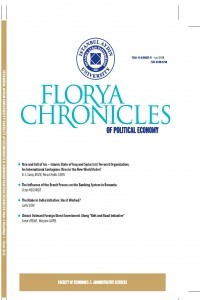Discerning the Determinants of Common Stock Valuation: An Empirical Analysis
Discerning the Determinants of Common Stock Valuation: An Empirical Analysis
This empirical study combines the fundamental intrinsic-value theory
with the modern-portfolio theory to help discern the main determinants of
common-stock valuation. This study differs from previous studies in that a
simulated ex ante, controlled valuation-experiment is performed: for each
dividend-paying firm in a cross-sectional sample alternately employed
in a stock-valuation model are first, actual dividends; and then second,
a measure representing the dividend-paying-ability of the firm. For each
alternative strategy a set of results is generated, then generalised and a
comparison is made to see which strategy works best. An analysis-ofvariance
and a comparison-of-forecast-errors respectively indicate that a
dividend-paying-ability measure (1) has greater informational content and
(2) generally leads to better price appraisal when employed in a valuation
model.
Keywords:
Valuation, Dividend-paying-ability, CAPM JEL Classification: G 12,
___
- [1] Abdel-Khalic, A. and T.F. Keller, 1979, Earnings or cash flows: an experiment on functional fixation and the valuation of the firm, Studies in Accounting Research 16. [2] Brown, P., G. Foster and E. Noreen, 1985, Security analyst multi-year earnings forecasts and the capital market, Studies in Accounting Research 21. [3] Chang, L. and K. Most, 1980, Financial statement and investment decisions, Manuscript, (Florida International University, Miami). [4] Clayman, M.R. and R.A. Schwartz, 1994, Falling in love again - analysts’ estimates and reality, Financial Analysts’ Journal 50, 5, 66-68. [5] Gordon, M., 1959, Dividends, earnings and stock prices, Review of Economics and Statistics, May, 96-105. [6] _________. , 1962, The investment, financing and valuation of the corporation (Irwin, Homewood, ILL.). [7] Jacques, W. and D. Rie, 1994, Valuation factors across countries, in: The Handbook of Corporate Earnings Analysis (Probus Publishing). [8] Lintner, J., 1965, The valuation of risk assets and the selection of risky investments in stock portfolios and capital budgets, Review of Economics and Statistics 47, 13-37. [9] MacDonald, R. and D. Power, 1995, Stock prices, dividends, and retention: Long-run relationships and short-run dynamics, Journal of Empirical Finance 2, 2, 135-151. [10] Malkiel, B., 1970, The valuation of public utility equities, The Bell Journal of Economics and Management Science, Spring, 143-160. [11] _________. and J. Cragg, 1970, Expectations and the structure of share prices, American Economic Review 60, 601-617. [12] Markowitz, H., 1959, Portfolio selection: Efficient diversification of investments (John Wiley and Sons, New York). [13] Michaud, R. and P. Davis, 1982, Valuation model bias and the scale structure of dividend discount returns, Journal of Finance 37, 1, 562-573. [14] Newey, W. and K. West, 1987, A simple positive semi-definite, heteroskedasticity and autocorrelation consistent covariance matrix, Econometrica 55, 703-708. [15] Rozeff, M.S., 1983, Predicting long-term earnings growth, Journal of Forecasting 2, 425-435. [16] Sharpe, W.F., 1964, Capital asset prices: A theory of market equilibrium under conditions of risk, Journal of Finance 19, 425-442. [17] Sorensen, E. and D. Williamson, 1985, Some evidence on the value of dividend discount models, Financial Analysts Journal 41, 6, 60-69. [18] Vander Wiede, J. and W. Carleton, 1988, Investor growth expectations: Analysts vs. history, Journal Portfolio Management, Spring, 78-82. [19] White, H.,1980, A heteroskedasticity-consistent covariance matrix estimator and a direct test for heteroskedasticity, Econometrica 48, 817-838. [20] Williams, J.B., 1938, The theory of investment value (Harvard University Press, Cambridge, Massachusets).
- ISSN: 2149-5750
- Yayın Aralığı: Yılda 2 Sayı
- Başlangıç: 2015
- Yayıncı: İstanbul Aydın Üniversitesi
